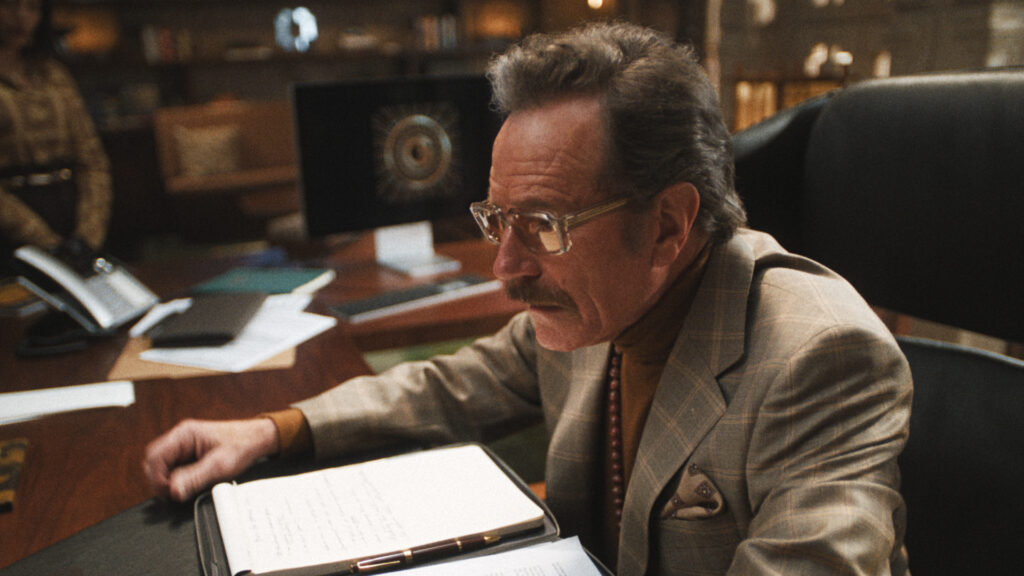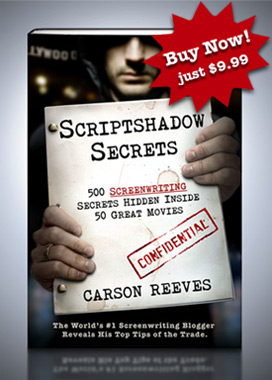
Today (Thursday) is the final day to get your scene submissions in for Scene Showdown. If you’ve got a great scene, send it to me in PDF form at the e-mail below…
What: Scene Showdown
Rules: Scene must be 5 pages or less
When: Friday, March 28
Deadline: Thursday, March 27, 10pm Pacific Time
Submit: Script title, Genre, 50 words setting up the scene (optional), pdf of the scene
Where: carsonreeves3@gmail.com
The top 5 scenes go up tomorrow for voting.
Okay, time to give you some last minute scene-writing inspiration. I was watching the new Seth Rogen Apple show, “The Studio,” last night, which covers a new studio head trying to get good (translation: artistic) movies made inside a studio that wants him to make bad (translation: profitable) movies.
It’s a fun show. The first episode covers the current studio head getting fired and Seth Rogen’s character, Matt, replacing her. Matt wants to return to a time when studios made good movies, like The Godfather. The problem is, the studio’s primary financier, Griffin Mill (Bryan Cranston), wants to make tons of money. In fact, he just acquired the rights to the Kool-Aid Man, believing he can do for their studio what Barbie did for Warner Brothers.
As Matt tries to figure out how he’s going to terminate any type of Kool-Aid franchise, he takes a meeting with his hero, Martin Scorsese, who says he wants to make a Jim Jones movie, about the real life cult leader who had all his followers drink a suicidal drink (some called it “kool-aid” at the time) that would allow them to ascend to the next plane of existence.
Seeing an opportunity to secure a Martin Scorsese film AND make a Kool-Aid movie for his boss, Matt buys Scorsese’s pitch in the room with only one condition – that the title of his Jim Jones movie be “Kool-Aid.” But reality hits Matt later on when Griffin starts asking for details about the movie, and Matt is forced to do the unthinkable – kill his hero’s project.
Bringing this back to the topic at hand, the show has a lot of good scenes, and I want to focus on one in particular because it’s the simplest version of a scene and yet an example of how even the simplest scenes can be great.
To set up the scene, Matt, who’s an upper level executive at the studio, just showed up at work to learn that Patty, the studio head, has been fired, and that their boss, Griffin Mill, wants to speak to Matt. Matt’s no dummy. He thinks that he could be replacing Patty.
This gives our hero the primary objective in the scene – he wants this job. That’s always the start of a strong scene. Also of note, this is a very important job. It’s the head of the studio. Matt has worked at this studio for 20 years. And the way it works in studios is when you’re one of the few up for the job, if you don’t get chosen, you almost always get fired.
So the stakes are sky high. And like I told you last week, the higher you turn up the stakes “dial,” the more intense your scene is going to feel.
Now, does anybody remember what you need next to have a good scene? I’ll help you out. You need conflict. So, how do you get conflict? You get it by placing another character in the scene who stands in the way of your hero getting his goal.
But before I explain to you how that happens, I want to point out that there is nuance to this equation. If you’re thinking in black and white terms, you’d have Griffin come into this scene and say, “I’m not giving you the job.”
But instead, Griffin comes into the scene and says, “I want to give you this job. But I’m worried about something. I hear that you like artsy-fartsy movies. And we can’t make artsy-fartsy movies. We need to make movies that make money. In fact,” he says, “I just bought the rights to the Kool-Aid Man.”
In this scene, the obstacle standing in the way of Matt achieving his goal is more internal than external. To accept the job means making the kinds of movies that he hates. Which means he has to decide if that’s really something he wants to do. Ultimately, he decides that becoming a studio head is too big of an opportunity to pass up and goes along with Griffin.
It’s a good scene. Cause it keeps things simple – two characters, there’s a want, there’s something in the way – and when you have that setup, writing a scene becomes easy. You can play around. It’s like having your plate, utensils, glass, and napkin already laid out for you. All you have to do is eat. And you can eat in whatever order you want.
Where writers struggle in scenes is when they don’t understand what each character in the scene wants and why.
Because you can go deeper into the scene makeup if you want. Yeah, the scene is centered around Matt and Matt’s objective. But it helps to know Griffin’s side too. What does he want? Why does he want it? The more you know about him, the better you can write his side of the scene (this is one of the key tips I teach in my dialogue book). But, in the end, if you set up those basic parameters of goal-obstacle-conflict, you should write a lot of winning scenes.
Okay, that concludes today’s scene-writing lesson, guys. It’s time to get your scenes in! The clock is ticking!!

